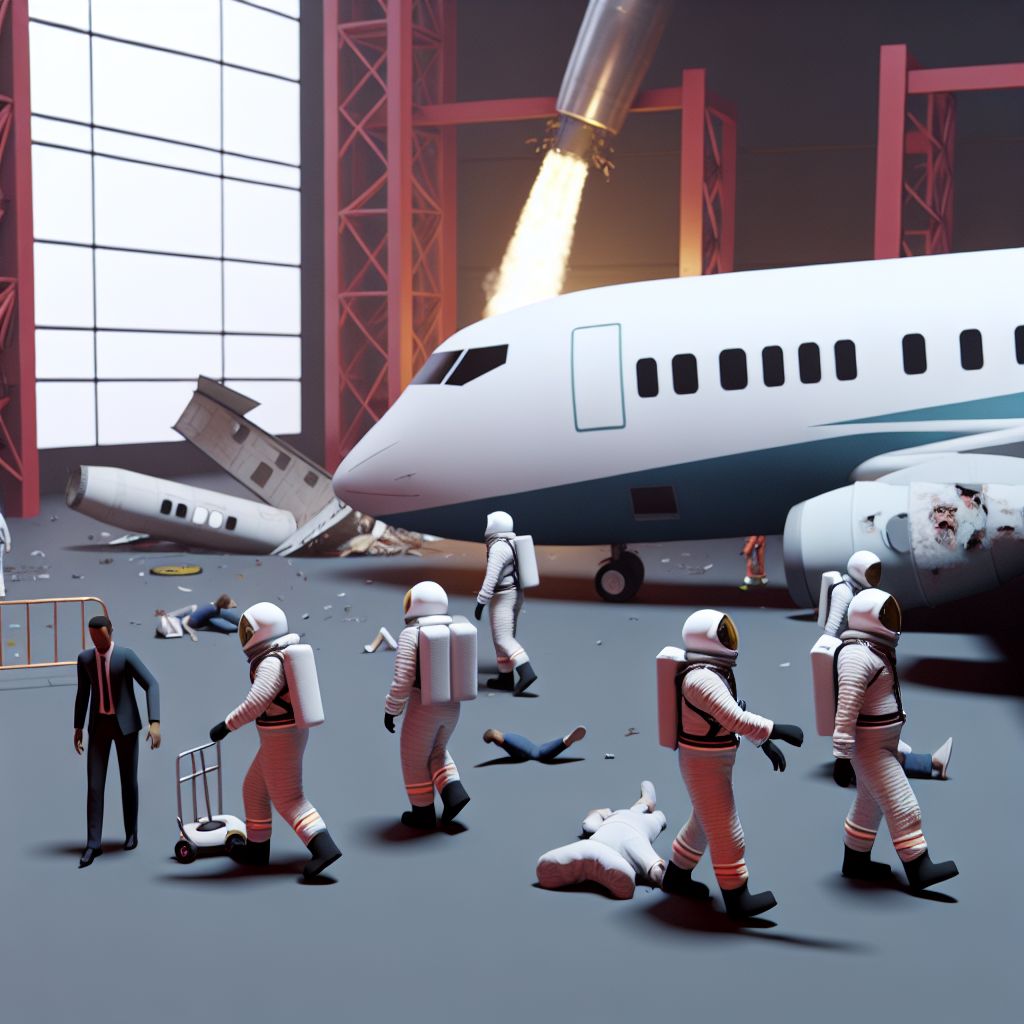Deutsch: Flugzeugabsturz / Español: Accidente de avión / Português: Acidente de avião / Français: Accident d'avion / Italiano: Incidente aereo
In the Space industry context, an Airplane crash can refer to accidents involving Aircraft that are part of Aerospace operations, such as test flights of experimental spaceplanes, transport operations related to space activities, or aircraft used for astronaut training. These incidents, while primarily associated with Aviation, impact the space industry by affecting safety protocols, training procedures, and the design of aerospace vehicles.
Description

An airplane crash in the space industry often involves unique types of aircraft, such as high-Altitude Reconnaissance planes, experimental vehicles designed to reach the edge of space, or traditional aircraft modified for astronaut training (e.g., the "Vomit Comet" used for zero-Gravity Simulation). These crashes can occur due to a variety of factors, including mechanical failure, human error, challenging environmental conditions, or issues related to the experimental nature of the technology being tested.
Application Areas
Airplane crashes within the space industry can significantly influence several areas:
- Safety and Training: Incidents involving training aircraft can lead to revisions in astronaut training programs and safety protocols.
- Research and Development: Crashes during the test flights of spaceplanes or other experimental Craft can provide Critical data that drives changes in design and development practices.
- Regulatory and Oversight Changes: High-profile accidents can lead to increased scrutiny from regulatory bodies, potentially resulting in changes to aerospace regulations and standards.
Well-Known Examples
- SpaceShipTwo VSS Enterprise Crash (2014): This tragic accident occurred during a test flight and resulted in the death of one pilot and injuries to another, highlighting the risks associated with testing commercial Spacecraft.
- NASA T-38 Jet Crashes: These aircraft are used for astronaut training, and several accidents over the decades have LED to changes in training procedures and aircraft operation protocols.
Treatment and Risks
Addressing airplane crashes in the space industry involves:
- Investigation and Analysis: Thorough investigations are conducted to determine the causes of crashes, involving agencies like the National Transportation Safety Board (NTSB) in the United States. The findings help in understanding what went wrong and in preventing future accidents.
- Technological Improvements: Data from crashes contribute to enhancing the safety features and designs of experimental aircraft and spaceplanes.
- Training enhancements: Crashes often lead to overhauled training programs that incorporate new safety measures and simulation techniques to better prepare astronauts and pilots for Emergency situations.
Summary
An airplane crash in the space industry, while a rare and unfortunate event, plays a significant role in shaping safety standards, training protocols, and vehicle design within the sector. These incidents prompt rigorous investigations and often lead to improvements in aerospace technology and operational procedures, ultimately contributing to the safer Advancement of space exploration technologies.
--
Related Articles to the term 'Airplane crash' | |
| 'Safety and Reliability' | ■■■■■■ |
| Safety and Reliability in the space industry refer to the measures, practices, and standards that ensure . . . Read More | |
| 'Fixture' | ■■■■■■ |
| Fixture in the space industry context refers to specialized devices, structures, or assemblies used to . . . Read More | |
| 'Composant' | ■■■■■ |
| Composant in the space industry context refers to any individual part or Element that is integral to . . . Read More | |
| 'Landing gear control' | ■■■■■ |
| Landing gear control in the space industry context refers to the systems and mechanisms designed to deploy, . . . Read More | |
| 'Test Range' | ■■■■■ |
| Test Range in the space industry refers to designated areas where space-related tests, including the . . . Read More | |
| 'Airspace Management' | ■■■■■ |
| Airspace Management in the space industry context refers to the Coordination and regulation of the use . . . Read More | |
| 'Commercial airliner' | ■■■■■ |
| Commercial airliner: Commercial Airliner in the space industry context refers to the use and potential . . . Read More | |
| 'Manned Space Mission' | ■■■■■ |
| Manned Space Mission refers to space missions that involve human astronauts travelling into space to . . . Read More | |
| 'Payload Integration' | ■■■■■ |
| Payload Integration in the space industry context refers to the process of preparing, assembling, testing, . . . Read More | |
| 'Weather Forecasting' | ■■■■■ |
| Weather Forecasting in the space industry context refers to the Prediction and analysis of space weather, . . . Read More | |
